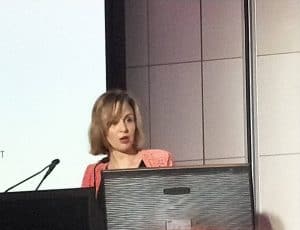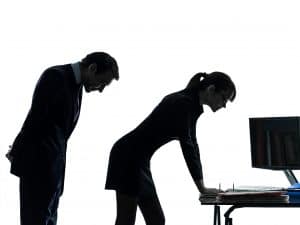Last week I mentioned two work-related films at the Melbourne International Film Festival. Tomorrow’s Castlemaine Documentary Film Festival is screening Happy Sad Man a film about the mental health of Australian men. There is an overlap with work-related mental health, especially farmers, so I’ve bought my ticket.
Category: gender
In order to grow, OHS needs economists, philosophers, ethicists and gender specialists

The occupational health and safety (OHS) profession is being affected by demographic changes as much as any other profession. Younger people seem to have a very different expectation on how to interpret and apply OHS, and older people are tired of being lectured to, and this is putting pressure on those who organise events, seminars and conferences and those who mentor and educate in a range of ways.
Some organisations and conferences are responding by reconfiguring the provision of information away from the lecture format of an expert to a mix of communication methods. This blog has written about some of those that occurred in the last two years. These conferences are less academic than in earlier days. Rarely is a conference accompanied by a handbook of research-based conference papers; some provide no papers at all and slideshows delivered a fortnight after the event are devoid of context and next to useless.
Continue reading “In order to grow, OHS needs economists, philosophers, ethicists and gender specialists”Men’s Health podcast
Day 1 of the Australian Labor Party conference was fascinating but unsatisfying in terms of debate on occupational health and safety matters so I spoke with one of the many exhibitors at the conference.
Glen Poole is the CEO of the Australian Men’s Health Forum and the podcast below includes a brief discussion of the importance of men’s health and the relevance of the workplace in generating and managing workplace mental health.
The importance of evidence in addressing workplace mental health issues
 At the recent Scientific Meeting of the Australia and New Zealand Society of Occupational Medicine (ANZSOM), Allison Milner stepped in for an ill Tony La Montagne and added value to his intended presentation on workplace mental health. This meeting is different from other conferences in one particular way, in relies on evidence and not marketing for its presentations. This difference made Milner’s presentation very powerful.
At the recent Scientific Meeting of the Australia and New Zealand Society of Occupational Medicine (ANZSOM), Allison Milner stepped in for an ill Tony La Montagne and added value to his intended presentation on workplace mental health. This meeting is different from other conferences in one particular way, in relies on evidence and not marketing for its presentations. This difference made Milner’s presentation very powerful.
Milner set the scene with a broad picture of mental health:
“1 in 5 Australians have a mental illness, which equivalates to about 1.5 million. And over 3000 people lose their life to suicide every year, and the vast majority of these people being men. But suicide affects far more people than those people who attempt or sadly lose their life. It affects their work colleagues, it affects people in our community and it affects our family.”
Continue reading “The importance of evidence in addressing workplace mental health issues”
Is the Senate a workplace?
 Recently Australian media was entranced with an argument over gender politics between two Senators, David Leyonjhelm and Sarah Hanson-Young. One of the elements in the argument concerns sexual harassment in the workplace but is the Australian Parliament a workplace like any other Australian workplace? And does this really matter?
Recently Australian media was entranced with an argument over gender politics between two Senators, David Leyonjhelm and Sarah Hanson-Young. One of the elements in the argument concerns sexual harassment in the workplace but is the Australian Parliament a workplace like any other Australian workplace? And does this really matter?
In the aftermath of the initial argument, Prime Minister Malcolm Turnbull said:
“David Leyonhjelm’s offensive remarks should have been withdrawn the moment they were uttered and he should have apologised. And it’s not too late for him to withdraw and apologise.
That type of language has no place in Parliament and it shouldn’t have a place in any workplace. We have to treat each other with respect, we must do that. Respect for women in particular is one of the highest priorities that we should be focused on. I just want to be very clear about this.
It is a, you know, we often talk about domestic violence and our concerns there and all the measures we’re taking to address it. I just want to say this, it’s a reminder to everybody that not all disrespecting women ends in violence against women, but that is where all violence against women begins. So you need to have respectful workplaces where we treat each other with respect. Where we disagree, we disagree in respectful language……” (emphasis added)
#MeToo, #TimesUp and #OHS
 Being International Women’s Day, the media is awash with articles about pay rates, gender equality and sexual harassment. One of those articles is written by Sarah Ralph of Norton Rose Fullbright. Ralph provides a good summary of the current gender issues and recent media attention (may require registration but it’s free). She makes several recommendations for how to reduce the risk of sexual harassment and unwanted media attention. Below those recommendations are looked at from the occupational health and safety (OHS) perspective to see how OHS can help reduce the psychological harm. Continue reading “#MeToo, #TimesUp and #OHS”
Being International Women’s Day, the media is awash with articles about pay rates, gender equality and sexual harassment. One of those articles is written by Sarah Ralph of Norton Rose Fullbright. Ralph provides a good summary of the current gender issues and recent media attention (may require registration but it’s free). She makes several recommendations for how to reduce the risk of sexual harassment and unwanted media attention. Below those recommendations are looked at from the occupational health and safety (OHS) perspective to see how OHS can help reduce the psychological harm. Continue reading “#MeToo, #TimesUp and #OHS”
Sexual harassment may be an OHS issue but what priority should it receive?
 One online news site in Australia has suggested that sexual harassment is an occupational health and safety (OHS) issue. At first blush, it should be. Sexual harassment can create mental ill-health and can certainly be harmful. But from the early days of discussions about workplace bullying and occupational violence in Australia, sexual harassment has been consciously excluded from OHS.
One online news site in Australia has suggested that sexual harassment is an occupational health and safety (OHS) issue. At first blush, it should be. Sexual harassment can create mental ill-health and can certainly be harmful. But from the early days of discussions about workplace bullying and occupational violence in Australia, sexual harassment has been consciously excluded from OHS.
Is It or Isn’t It?
Some of the best discussion on bullying, harassment and violence was written by Dr Clare Mayhew for the Australian Institute of Criminology in 2000. These included a practical handbook on prevention. (It’s peculiar that some of the most perceptive works on OHS occur outside the OHS profession. Well perhaps not so surprising.) In the handbook, Mayhew points out that harassment has always been an element of workplace bullying but excludes sexual harassment from her discussion:
“The Australian Institution of Criminology believes that prevention, rather than post-incident reaction, is the key to improved outcomes. However, the handbook needs to be adapted specifically to each organisation for best results. The discussions exclude activity that could be described as sexual harassment, which is extensively dealt with elsewhere.” (page 1)
This position is reflective of the OHS literature yet, on reflection, this position may have been wrong for it contributed to a fractured approach to managing workplace psychosocial hazards.
